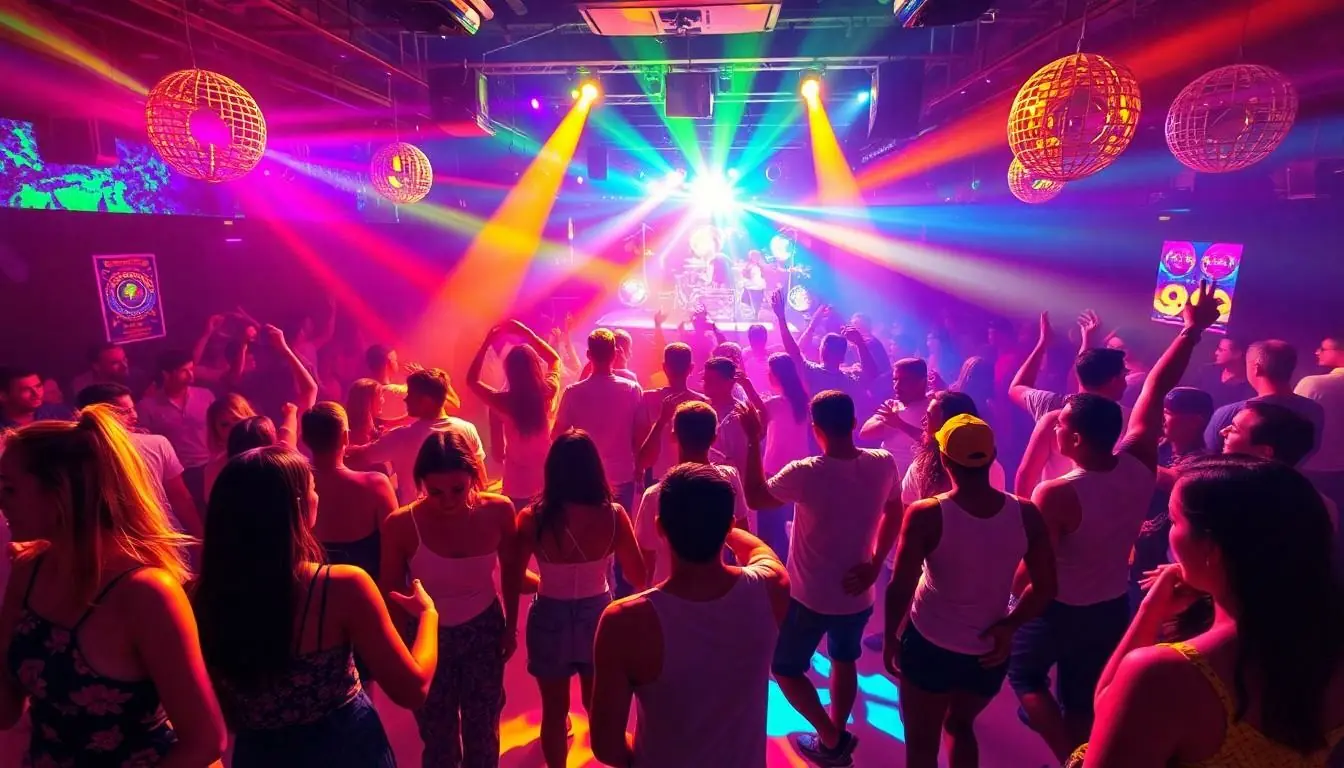Pop music isn’t just a genre; it’s a vibrant tapestry woven from countless influences and styles. From catchy hooks that stick in your head like gum on a shoe to beats that make you want to dance like no one’s watching, pop music has something for everyone. It’s the soundtrack to our lives, whether you’re belting out tunes in the shower or grooving at a party.
Table of Contents
ToggleOverview of Pop Music
Pop music showcases a variety of influences and styles, capturing the essence of contemporary culture. It prioritizes catchy hooks and rhythmic beats, appealing broadly to listeners worldwide. Artists draw inspiration from genres like rock, hip-hop, electronic, and R&B, creating a diverse sound palette.
Versatility marks pop music, as it often adapts trends from other genres to remain relevant. The genre thrives on collaboration, with many artists working together to produce distinctive tracks. Iconic figures in pop history include Madonna, Michael Jackson, and more recently, Taylor Swift and Ed Sheeran.
Chart performance plays a key role in defining pop hits, with platforms like Billboard tracking song popularity. Social media further amplifies this influence, allowing songs to go viral and reach wider audiences. Music videos complement tracks, adding visual storytelling that enhances listener engagement.
Cultural impact remains significant, as pop music often addresses social issues and personal experiences. Major events, like the MTV Video Music Awards, highlight the genre’s importance in the entertainment industry. With ongoing evolution, pop music continues to shape soundscapes in modern society.
As trends shift, emerging subgenres like synth-pop and indie-pop challenge traditional definitions, reflecting changes in listener preferences. Whether played at social events or during quiet moments, pop music continues to resonate deeply with individuals across various demographics.
Main Genres of Pop Music

Pop music encompasses a range of distinct genres, each offering unique characteristics and appeals. Understanding these genres enhances appreciation for the versatility within the pop music landscape.
Bubblegum Pop
Bubblegum pop features catchy melodies and simple lyrics, appealing primarily to younger audiences. Artists like Britney Spears and the Jackson 5 exemplify this genre’s playful and upbeat nature. Often infused with synthesizers and cheerful instrumentals, bubblegum pop aims to evoke feelings of joy and nostalgia. The late 20th century marked its peak, but elements persist in contemporary hits.
Dance Pop
Dance pop combines electronic beats and rhythmic hooks designed for club settings. This genre emphasizes energy and accessibility, targeting dance floors and physical movement. Major artists such as Lady Gaga and Katy Perry epitomize dance pop’s infectious appeal. With influences from house music and disco, this genre remains a staple in both mainstream charts and party playlists.
Synth-Pop
Synth-pop showcases synthesizers as the primary instrument, creating a futuristic sound. Born in the late 1970s and gaining popularity in the 1980s, this genre blends catchy melodies with electronic production. Notable acts like Depeche Mode and Duran Duran pushed synth-pop into the spotlight. Its revival in recent years, evident in artists like The Weeknd, has reignited interest in its distinct soundscapes.
Indie Pop
Indie pop thrives on creativity and often emerges from smaller, independent labels. Characterized by diverse sounds ranging from lo-fi to polished production, this genre prioritizes artistic expression. Bands like Vampire Weekend and Florence + The Machine highlight indie pop’s eclectic nature. Often embracing non-traditional song structures, the genre continues to attract a dedicated fanbase seeking authenticity.
Pop Rock
Pop rock melds catchy pop melodies with rock instrumentation, creating a cross-genre appeal. Artists such as Maroon 5 and Paramore exemplify how pop rock integrates powerful guitar riffs with approachable hooks. This genre’s versatility allows for both upbeat anthems and introspective ballads. Through its evolution, pop rock maintains relevance by adapting to contemporary musical trends.
Emerging Trends in Pop Music
Pop music continually evolves, showcasing fresh sounds and innovative styles. Emerging subgenres are reshaping the traditional landscape, creating new opportunities for artists and listeners alike.
Genre Blending
Genre blending significantly impacts pop music, as artists merge various styles to craft unique sounds. Pop artists frequently incorporate elements from rock, hip-hop, and electronic genres, leading to fresh tracks. This fusion attracts diverse audiences and broadens pop’s appeal. An example of this trend includes the rise of pop-rap, where catchy hooks meet rap verses, gaining popularity in mainstream charts. Collaborations between artists across genres amplify this movement, with tracks becoming cultural phenomena that reflect changing tastes.
Global Influences
Global influences shape contemporary pop music, introducing diverse rhythms and cultural elements. Artists worldwide incorporate traditional sounds, resulting in a rich tapestry of music. Latin pop emerged as a significant force, with artists like Bad Bunny and J Balvin driving its crossover success in English-speaking markets. K-pop continues to rise, blending Western pop sensibilities with distinct Korean elements, creating a massive fandom globally. Exposure to international artists promotes cultural exchange, making pop music a global conversation that resonates across borders.
Impact of Technology on Pop Music
Technology significantly shapes the evolution of pop music, refashioning how artists produce, distribute, and promote their work.
Streaming Services
Streaming platforms revolutionize music consumption. Services like Spotify and Apple Music redefine how listeners access pop music. These platforms offer vast libraries, enabling users to explore diverse genres and discover new artists effortlessly. Data shows that streaming accounts for over 80% of music industry revenue. Artists benefit from features such as curated playlists, which enhance visibility. The instant availability of tracks encourages more frequent listening. Emerging artists leverage these platforms to gain traction without traditional label support. This shift promotes a more open music landscape, facilitating rapid genre experimentation.
Social Media
Social media acts as a powerful tool for pop music promotion. Platforms like TikTok and Instagram allow artists to connect with fans directly. Viral moments can elevate songs to chart-topping status overnight. For instance, challenges and trends often spark widespread interest in new tracks. This engagement fosters a sense of community among listeners. Promoting music through authentic interactions appeals to younger audiences who value connection. Artists use these channels to share behind-the-scenes content, deepening fan relationships. The integration of social media into the music marketing strategy enhances overall reach and impact.
Pop music remains a vibrant and evolving genre that reflects the diverse tastes of listeners worldwide. Its ability to blend various influences and adapt to changing trends ensures it stays relevant in contemporary culture. As artists continue to experiment with sounds and styles the genre’s landscape will only grow richer.
The significance of pop music extends beyond entertainment; it fosters connections and sparks conversations about social issues and personal experiences. With technology playing a pivotal role in how music is consumed and shared the future of pop looks promising. As new subgenres emerge and global influences intertwine pop music will continue to resonate with audiences for years to come.


